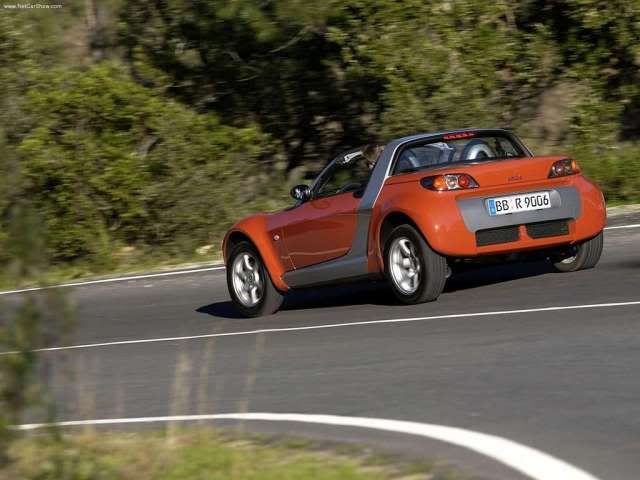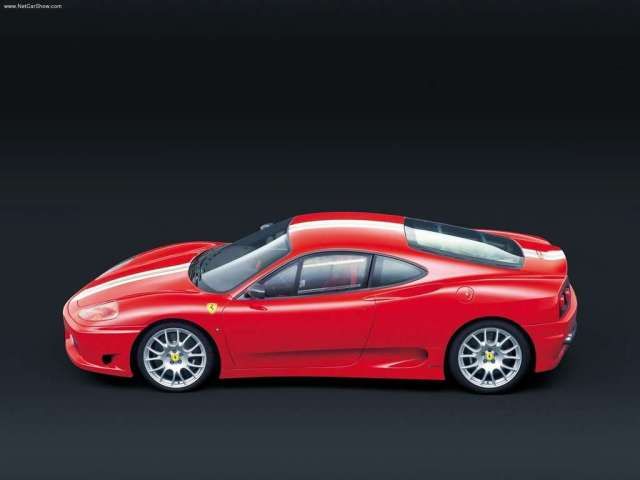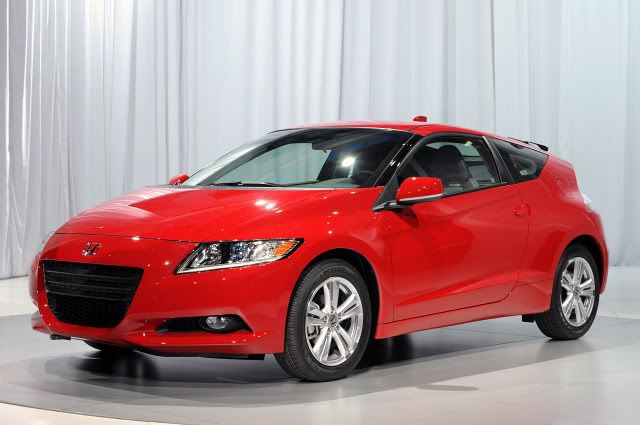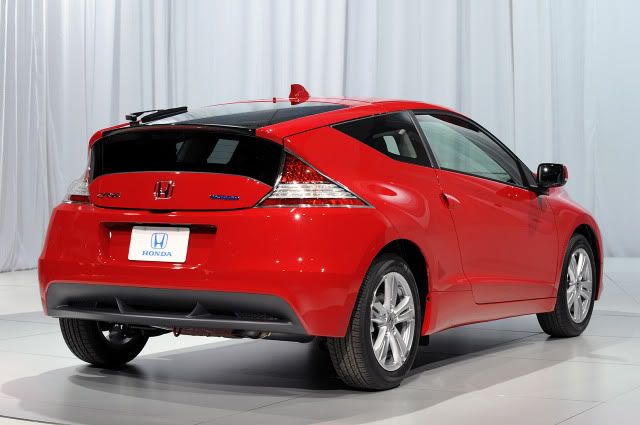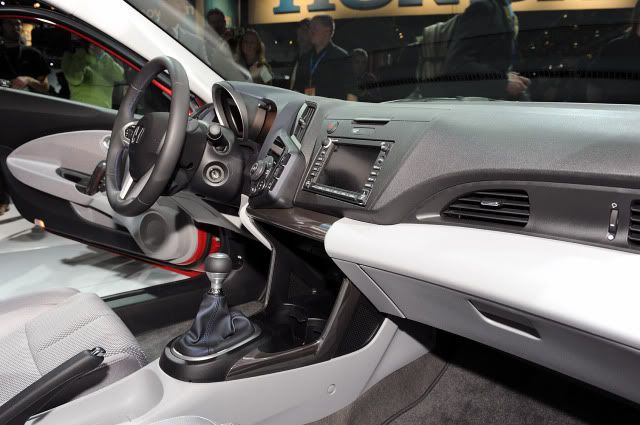The BMW X6 coupe-ute is already a plenty weird thing. The X6 M is weirder still, adding incomprehensible performance capability to this plenty weird thing (to say nothing of pissing off so-called M purists).
But the 2010 BMW ActiveHybrid X6 is nothing short of utterly fantastic. And we mean "fantastic" in all of its shades of meaning offered by the Encarta dictionary in the right column of our screen as we write this.
Let's see: The X6 ActiveHybrid is "extraordinarily good," at least compared to other hybrid SUV/coupe things. It is "apparently impossible but real," because, honestly who could have thought of such an impossibly complex thing? It exists "only in the imagination," or it will for the vast majority of humans, as the $89,775 base price will keep it off virtually all streets. That it's "extremely strange in appearance" needs no further clarification, although we note the additional bulge in hood of the X6 hybrid isn't helping make the vehicle look less strange.
And finally, the X6 hybrid is "unusual and unlikely to be successful."
Stop Making SenseBecause there is no conventional frame of reference in the automotive realm that will make the 2010 BMW ActiveHybrid X6 make sense, we will from this point forward, avoid trying to make some sense of this vehicle.

After all, what are we to make of a $90K sport-ute with little utility, almost as much sport as the standard and much cheaper X6, but without the big fuel-economy gains that you'd hope would come with 420 pounds of increased complexity?
The ActiveHybrid X6 (which we will refer to from this moment forward as simply the X6 hybrid) is the result of BMW's participation in a consortium of automakers including General Motors and (then) DaimlerChrysler that's since been disbanded. The consortium has to show for its work and money several technically impressive but practically vexing trucks such as the unpopular Chevy Tahoe hybrid and GMC Yukon hybrid, the Silverado and Sierra pickup truck versions, the guilt-assuaging Cadillac Escalade hybrid and, soon, a Dodge Ram hybrid, the BMW X6 hybrid and the Mercedes-Benz ML450 hybrid.
BMW is understandably not eager to talk about the consortium's other offspring, preferring instead to play up the fact that it has built the BMW of full hybrids. In other words, the 2010 BMW X6 Hybrid is meant to maintain as its guiding principle the traditional BMW ideal of performance driving.
The Ultimate Driving Hybrid?So all right, we'll take that bait. BMW claims that the X6 hybrid does zero to 60 mph in 5.4 seconds. That is indeed high-performance. And that it's done by a vehicle weighing in at a flab-tastic 5,688 pounds is really very, very impressive. Such performance is but a tenth of a second slower than the standard V8-powered X6 and about a second quicker than the six-cylinder X6. And in what surely must be a first, BMW says the X6 hybrid's hypercomplex electronics incorporate a launch control function (although we were unable to make it work on our test car despite repeated tries and guidance from the X6 hybrid's head powertrain engineer).

The 2010 BMW X6 Hybrid uses the same twin-turbo, direct-injection 4.4-liter V8 engine as the conventional X6 V8. For accelerative force the hybrid also brings two electric motors incorporated into the transmission to overcome the hybrid's additional 420 pounds of heft (thanks, NiMH batteries and magic transmission!). Possibly, as children the BMW engineers liked to try to run up the down escalators, just like us.
How It All WorksLook, there's no disputing that the X6 hybrid is a quick thing. BMW says that the powertrain system can make a maximum 480 horsepower. That is enough to move just about anything, but if you floor the throttle from a standstill or from a steady cruise, be prepared to wait awhile for the silicon brains to grab a cup of coffee and figure out what the hell to do about this recent request. We trust that, like many of the aspects of the X6 hybrid (and, for that matter, the related two-mode hybrids), this is possibly the state of the science — that such complex matters might not be able to be sussed out any more quickly. But the end result in the real world of non-engineers is that the X6 hybrid is slow to react to its throttle.
Of course, the presence of four fixed mechanical gears; two electric motors trading duties as power delivery devices or generators for the batteries depending on speed and load; three "virtual" gears that act something like electric continuously variable transmissions but using fixed ratios (for gears 2, 4 and 6); and a handful of magic beans, means that it might take us several lifetimes to figure things out, only to have load, speed or throttle position change when we'd just begun our calculations. Except that it wouldn't, because we'd sooner push the nearly 3-ton X6 hybrid to our destination than to try. Oh, and that's just the transmission.
A more impressive aspect of powertrain performance (though decidedly less typically BMW) is its ability to run on electric power alone up to 37 mph. This is faster than the related GM two-mode utes are capable of doing. And it's a claim with some merit. Furthermore, the gasoline engine fires up and shuts down in a most agreeably smooth fashion. Like the GM offerings, the 2010 BMW X6 Hybrid is all-electric in reverse so we think maybe BMW should just mount the seats the other way around and just forget about the gas engine.
Does Not ComputeSo what about those characteristic BMW brakes and steering — two elements arguably more responsible for BMW's ultimate driving machine that powertrain performance?
Well, you won't be surprised to learn that the braking system for the hybrid is complicated by electronics. BMW calls this Sensotronic Brake Actuation, which de-couples the brake pedal from the rest of the mechanical/hydraulic braking system. This is because light braking is accomplished by the regenerative braking system, wherein the electric motors act as generators to recharge the batteries. Beyond a 0.3g threshold of braking force, the conventional hydraulic/mechanical system takes hold. Because there is no mechanical connection between the system and the pedal, BMW is forced to fake it, using an "integrated pedal force simulator." This doesn't so much simulate actual braking feedback as it does simulate stepping on a rubber playground ball. There's an initial light resistance followed immediately by an apparent collapse of all structure, followed by high pressure and unexpectedly high braking force. It's not like a BMW in any conventional way that we know about.
Electrons are responsible for the steering assist in the 2010 BMW X6 Hybrid as well, and, like many such systems, the steering feel is a little light for the old touch receptors. We'd be able to tell better if we didn't drive the X6 hybrid on the highway and surface streets in and around Miami Beach, where there is no geographical feature that a straight road or bridge can't be built directly through.
Just Like Crockett and TubbsMiami Beach also proves to be perhaps not the finest place to test handling prowess, unless you're into 90-degree corners and using tourists as apex markers.

The X6 hybrid's reason for being is its purported status as the most dynamic and characteristically BMW of hybrids. Unfortunately BMW's marketing position does not entirely jibe with the fact that the excellent torque-vectoring system from the standard X6 could not be fitted to the X6 hybrid because the battery pack took up the space under the cargo floor. An extra quarter-ton of heft doesn't help, either.
But we'll have to reserve judgment on the hybrid's handling until we get it on roads that curve or undulate or, well, do anything. It gets new, stiffer springs and dampers along with stiffer antiroll bars to cope with the added weight and replicate the tuning of the conventional X6. Also, the hybrid gets its own sassy 19-inch wheels that can only be described as "swoopy."
Those wheels, a few discreet badges and a big old lump in the hood (to accommodate electronics that sit atop the engine) are the only real identifiers of this X6's alternative powertrain.
Also, if you stalk the owner of an X6 hybrid, you'll notice he'll make slightly fewer trips to the gas station than a standard X6 (either V8 or six-cylinder). The hybrid is rated by the EPA at 17 mpg city and 19 highway. Compared to the atrocious mileage of the standard V8 model (13 mpg city/18 mpg highway) and the pretty-darn-bad mileage of the six-cylinder (15 mpg city/21 mpg highway), the X6 hybrid represents a big gain. Still, a rating of 18 mpg combined means this hybrid achieves a combined fuel economy roughly equal to a Chevy Avalanche and an annual gas cost of about $2,300.
The 2010 BMW ActiveHybrid X6 represents more work for less meaningful results than most first marriages.
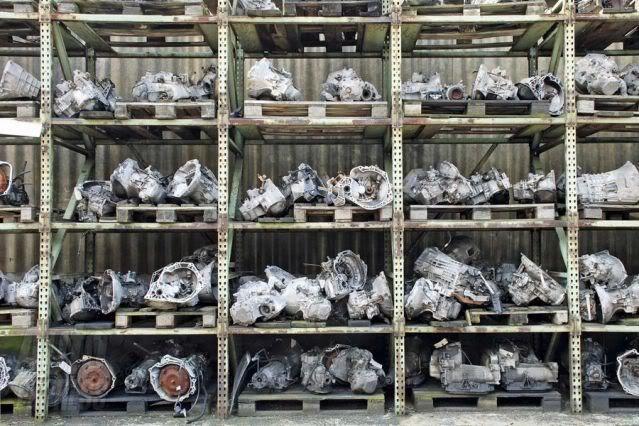 Tarmac admittedly isn't a great fan of the scrappage scheme, though we will admit that there are benefits in terms of keeping the industry afloat and keeping people's jobs, but it's clear that a well rounded view on the scheme is clearly beyond the reach of magazines looking for a quick controversy.
Tarmac admittedly isn't a great fan of the scrappage scheme, though we will admit that there are benefits in terms of keeping the industry afloat and keeping people's jobs, but it's clear that a well rounded view on the scheme is clearly beyond the reach of magazines looking for a quick controversy.


















